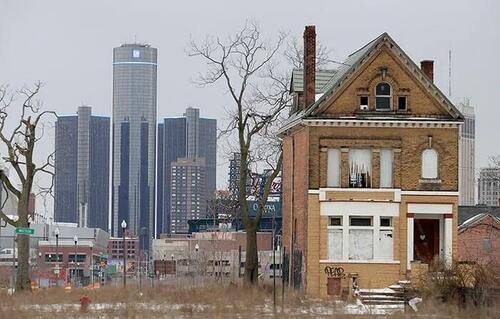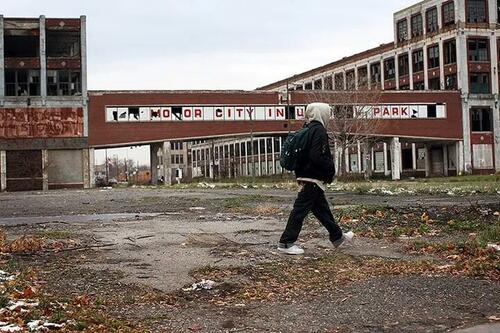'Urban Doom Loop' Hits Midwest
The ongoing economic impacts of 'work from home' policies implemented during the pandemic aren't just affecting major coastal cities like San Francisco and New York.

Last year, NYU economist Arpit Gupta used the phrase "urban doom loop" to describe a decline of foot traffic in central business districts, which "adversely affects the urban core in a variety of ways," including lowering municipal revenues, and making it more challenging to provide public goods and services without increasing taxes.
Now, as Insider's Eliza Relman writes, the 'Urban Doom Loop' has hit the heartland, as Midwestern states are facing a crisis of their own; struggling to attract workers, residents, and visitors to their downtowns - a problem which predates the Covid-19 pandemic.
According to economists and urban planners, Midwestern cities need to make major changes in order to boost quality of life in their downtowns, instead of just being a place where people are forced to go to work.

"What I really think it comes down to in these places is that there's nothing special about any of the downtowns in any of these cities that would be attractive to new residents," said Ball State University economist, Michael Hicks. "The cities just don't have the fundamental amenities that would attract people."
A good way to gauge just how much trouble Midwestern cities are in is to take a look at how many people their downtowns are actually attracting. Standing in the middle of the city square and counting people can be a bit tough though, so researchers at the University of Toronto have been analyzing anonymized cellphone data for the past few years to track the number of people physically present in central business districts each day. The granular, individual-level data provides a fuller picture of downtown vitality — both before and after the pandemic — than other measures such as office vacancy rates and mass-transit ridership. The conclusion the study draws for the heartland is bleak. Five of the bottom 10 cities in the tracker's most recent data, which measured the period from December 2022 to March 2023, were in the Midwest: St. Louis, Indianapolis, Minneapolis, Cleveland, and Kansas City, Missouri. Nine of the 13 Midwestern cities tracked in the study were in the bottom half of the rankings. -Insider
Other measures of central business district health are looking dire as well for these cities. Minneapolis Mayor Jacob Frey recently said he expects his city's downtown workforce will max out at around 75% of its pre-pandemic numbers, while a recent study revealed that 21.2 million square feet of commercial office space is currently sitting vacant.
Salesforce announced in April that it would be giving up 25% of its office space in the Indianapolis Salesforce Tower, the state's tallest building.
In terms of migration, the Midwest has also struggled to attract new residents and hold onto its existing residents - marking a net decline of over 400,000 people between April 2020 and July 2022.
If these cities fall into the "urban doom loop,' things could get even worse, as commercial property taxes make up a significant portion of many city budgets. It therefore makes sense that as office vacancies rise, the decreased tax revenue could force lawmakers to curtail city services or make cuts to key programs. This decline in quality of life and services in turn causes people to leave in a 'self-reinforcing exodus.'
"The writing on the wall is not great," said University of Toronto director of the School of Cities, Karen Chapple, who authored the downtown recover study.
According to Hicks, the Ball State economist, "For the second half of the 20th century, most Midwestern cities really focused on bending over backwards to accommodate businesses," adding "They bulldozed neighborhoods, they did eminent domain for all kinds of highways to get the products moved from factory to customer more quickly. And they neglected the fundamentals that people have liked about cities for 3,000 years, which is you can meet with people, you can walk to a place to eat, it's safe."



